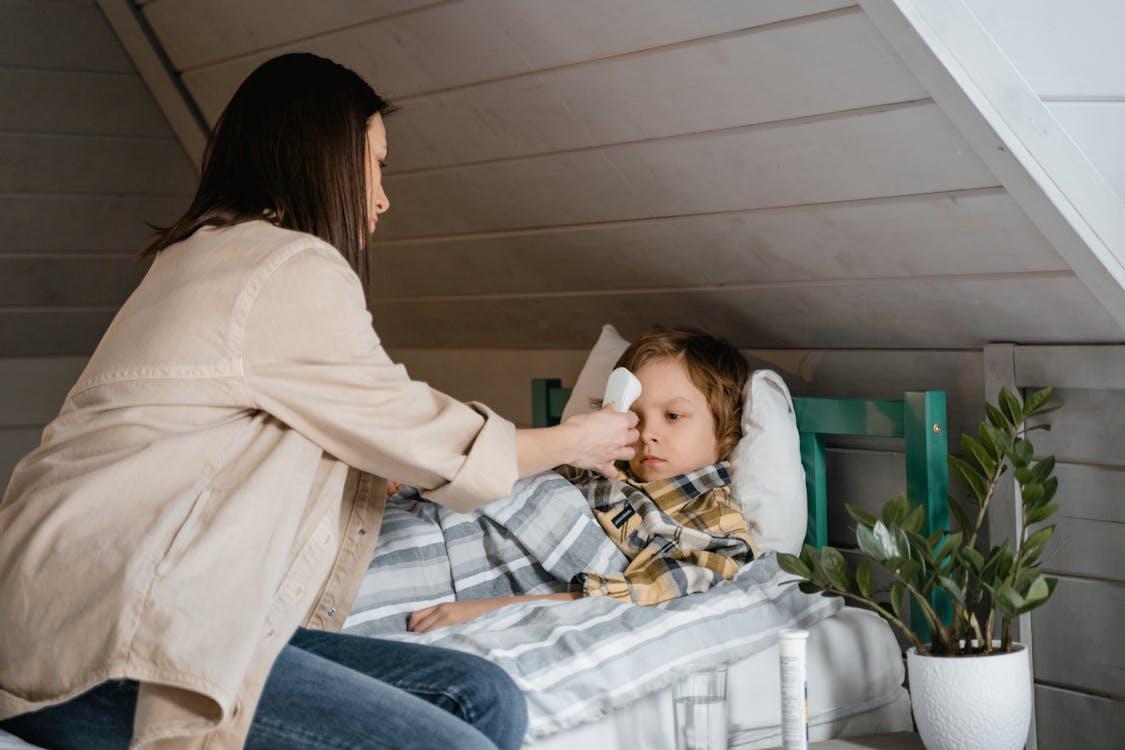Every parent knows the pattern. One child comes home with a sore throat, and within days, several classmates are out sick. Strep throat isn’t just uncomfortable—it’s one of the main reasons children are kept home from school. Teachers worry about outbreaks, parents juggle missed work, and schools require documentation before kids can come back.
Understanding how strep spreads, the symptoms that set it apart, why treatment matters, and how a doctor’s note for school helps families handle the situation with less stress.
Why Strep Spreads So Quickly in Schools
Strep throat is caused by the group A Streptococcus bacteria. It spreads through droplets from coughing, sneezing, or sharing food and drinks. Children are especially vulnerable because they’re in close contact all day. Shared desks, pencils, and even sports equipment make it easy for germs to pass from one child to another.
Younger kids are at higher risk since handwashing and cough etiquette are not always consistent. That’s why one positive case in a classroom can quickly lead to multiple absences.
Key Symptoms Parents Should Look For
Strep throat can look different from a cold. Parents often notice a sharper, more intense set of symptoms, such as:
- Sudden sore throat that makes swallowing painful.
- Red, swollen tonsils, sometimes with white or yellow patches.
- Tiny red spots on the roof of the mouth.
- Fever above 101°F.

- Headache and stomachache, especially in children.
- Swollen lymph nodes in the neck.
- No cough or runny nose, which separates it from viral infections.
A child who refuses food or water because swallowing is painful may very well have strep and should be tested.
How Doctors Confirm Strep Throat
When a child shows these symptoms, doctors usually recommend a throat swab. Two main types of tests are commonly used:
Rapid Antigen Test
- A quick swab with results in about 10 minutes.
- Helpful when parents need answers right away.
Throat Culture
- Sent to a lab and takes 24–48 hours.
- Considered more accurate, especially if the rapid test is negative but symptoms strongly suggest strep.
Schools often require proof of a positive or negative test result, which makes testing an important step for both treatment and attendance policies.
Why Kids Must Stay Home Until Treated
A child with untreated strep throat can still spread the bacteria, even if they start to feel better. That’s why doctors recommend antibiotics, usually a 10-day course. After 24 hours on antibiotics, most children are no longer contagious and can safely return to school if they are fever-free.
This waiting period protects other students, teachers, and staff. Without it, strep can continue to move through entire classrooms and cause repeated absences.

The School Note Requirement
Schools often ask for a doctor’s note before allowing children to return to school. This helps confirm the illness and ensures the child has received treatment. Parents know this step can be frustrating—especially if the only reason for the visit is to get documentation.
Instead of spending hours in a waiting room, many families now get a doctor’s note online. Services that provide an online doctor note for school make the process faster, easier, and less stressful.
Having a real doctor’s note also protects attendance records. Without it, absences may go unexcused, which can create issues for both students and parents.

Why Proper Treatment Matters Beyond Attendance
Skipping treatment or stopping antibiotics early puts kids at risk for serious complications. Some of these include:
- Rheumatic fevercan damage the heart.
- Kidney inflammation– linked to post-streptococcal infections.
- Prolonged spreadwithin families and classrooms.
Finishing the full prescription is important, even when symptoms improve after a couple of days.
How Strep Affects Families
When a child is home with strep throat, parents often face challenges with work schedules. Extended absences sometimes require FMLA certification so parents can legally take time off. Some employers may also ask for a Certification for FMLA if multiple sick days are needed.
This shows how a simple infection can quickly become a logistical issue that affects more than just the child.
Why Teachers Rely on Notes
Teachers value medical notes because they confirm that a child has been treated and is no longer contagious. A real doctor’s note also helps schools track absences and prevent further spread in classrooms.
For teachers already balancing large groups of students, knowing that returning children are safe to be around makes a big difference.
Tips to Reduce Strep in Families
While there’s no guaranteed way to avoid strep, simple steps can limit its spread:
- Teach kids to wash their hands often and thoroughly.
- Remind them not to share cups, utensils, or food.
- Replace toothbrushes after 24 hours on antibiotics.
- Encourage covering coughs and sneezes with elbows instead of hands.
- Clean high-touch surfaces like phones, doorknobs, and remote controls.
These actions won’t stop every case, but can cut down on how quickly it spreads through homes and classrooms.
When Parents Should Call the Doctor
Parents should seek care quickly if their child has:
- A sudden sore throat with high fever.
- Difficulty swallowing liquids.
- Visible white or yellow patches in the throat.
- Symptoms that worsen instead of improving after two days.
Testing helps confirm strep and ensures treatment starts early, which shortens the contagious period and speeds recovery.
Get An Online Doctor Note For School
When your child is sick, the last thing you need is the stress of chasing paperwork. My Dr’s Notes make it easy to handle school and work requirements without ever leaving home. No long lines. No waiting rooms. No extra stress.
With us, you can:
- Get a real doctor’s note onlinein just minutes.
- Request an online doctor note for schoolthat schools accept.
- Complete your Certification for FMLAquickly if you need time off work to care for your child.
Your time is better spent caring for your child—not waiting for signatures. Let My Dr’s Notes handle the paperwork so you can focus on what matters most: helping your child feel better and getting them back to school.
Author’s Bio
Phoebe K. writes practical health content that helps parents understand common childhood illnesses and manage school absences with confidence. Her focus is on making medical information simple, clear, and supportive for busy families.



You must be logged in to post a comment.